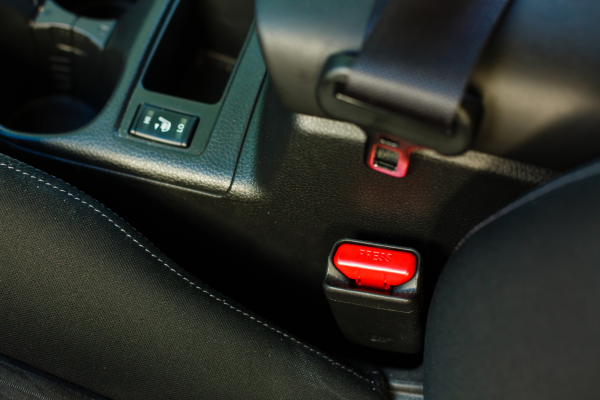Vehicle Safety
Fixing Defective Airbags: A Guide for Car Owners

Fixing Defective Airbags: A Guide for Car Owners
Understanding Airbag Functionality
Airbags are critical safety components designed to protect occupants by cushioning blows during collisions. They work in conjunction with seatbelts to reduce injury. A typical airbag system includes crash sensors, an inflation module, and the airbag itself. When a severe impact is detected, sensors trigger the release of the airbag within milliseconds.
Signs of a Defective Airbag
Identifying a faulty airbag early can prevent accidents from becoming fatal. Key indicators include:
Airbag Warning Light
If the airbag warning light on your dashboard stays on, it signifies a problem with the airbag system.
Non-Deployed Airbags
In the event of a collision where the airbags did not deploy, they may be defective or improperly installed.
Unusual Noises
Clicking or other unusual noises from the steering wheel or dashboard could indicate airbag issues.
Steps to Fix Defective Airbags
1. Consult Your Vehicle's Manual
Your car's manual often provides specific instructions related to your vehicle's airbag systems. It details the locations of sensors and components, helping you understand the basics before seeking repairs.
2. Check for Recalls
Manufacturers recall millions of vehicles each year for airbag defects. Visit your manufacturer's website or the National Highway Traffic Safety Administration's (NHTSA) recall lookup tool to see if your vehicle is affected.
3. Professional Diagnostic
Visit a certified mechanic or dealership for a complete diagnostic. They use specialized equipment to assess and pinpoint issues within the airbag system.
4. Replace Faulty Components
If a defect is confirmed, replace the faulty components. This might include sensors, wiring, or the airbag module itself. Ensure that all replacements meet the original equipment manufacturer (OEM) standards.
5. Post-Repair Testing
Once repairs are made, the airbag system must be thoroughly tested to ensure everything functions correctly. Professional technicians will reset the airbag control module and verify that the system is operational.
Regular Maintenance Tips
To maintain airbag integrity, follow these tips:
Routine Inspections
Include airbag checks in your regular vehicle maintenance schedule.
Handle with Care
Never expose the airbag system to moisture or unnecessary impacts.
Stay Updated
Keep track of any new recalls or safety notices from your vehicle's manufacturer.
Airbags are a cornerstone of vehicle safety. By knowing how to identify potential defects and understanding the steps to fix them, you can protect yourself and your passengers. Regular maintenance and prompt attention to warning signs are key to ensuring that your vehicle's airbag system performs reliably when you need it most.
Vehicle Maintenance
Repairing Your Car's Seat Belt: A Step-by-Step Guide
Vehicle Safety
Demystifying Airbag Modules: Your Questions Answered
Vehicle Safety
Fixing a Stuck Seat Belt: Your DIY Guide
Fixing Defective Airbags: A Guide for Car Owners
Understanding Airbag Functionality
Airbags are critical safety components designed to protect occupants by cushioning blows during collisions. They work in conjunction with seatbelts to reduce injury. A typical airbag system includes crash sensors, an inflation module, and the airbag itself. When a severe impact is detected, sensors trigger the release of the airbag within milliseconds.
Signs of a Defective Airbag
Identifying a faulty airbag early can prevent accidents from becoming fatal. Key indicators include:
Airbag Warning Light
If the airbag warning light on your dashboard stays on, it signifies a problem with the airbag system.
Non-Deployed Airbags
In the event of a collision where the airbags did not deploy, they may be defective or improperly installed.
Unusual Noises
Clicking or other unusual noises from the steering wheel or dashboard could indicate airbag issues.
Steps to Fix Defective Airbags
1. Consult Your Vehicle's Manual
Your car's manual often provides specific instructions related to your vehicle's airbag systems. It details the locations of sensors and components, helping you understand the basics before seeking repairs.
2. Check for Recalls
Manufacturers recall millions of vehicles each year for airbag defects. Visit your manufacturer's website or the National Highway Traffic Safety Administration's (NHTSA) recall lookup tool to see if your vehicle is affected.
3. Professional Diagnostic
Visit a certified mechanic or dealership for a complete diagnostic. They use specialized equipment to assess and pinpoint issues within the airbag system.
4. Replace Faulty Components
If a defect is confirmed, replace the faulty components. This might include sensors, wiring, or the airbag module itself. Ensure that all replacements meet the original equipment manufacturer (OEM) standards.
5. Post-Repair Testing
Once repairs are made, the airbag system must be thoroughly tested to ensure everything functions correctly. Professional technicians will reset the airbag control module and verify that the system is operational.
Regular Maintenance Tips
To maintain airbag integrity, follow these tips:
Routine Inspections
Include airbag checks in your regular vehicle maintenance schedule.
Handle with Care
Never expose the airbag system to moisture or unnecessary impacts.
Stay Updated
Keep track of any new recalls or safety notices from your vehicle's manufacturer.
Airbags are a cornerstone of vehicle safety. By knowing how to identify potential defects and understanding the steps to fix them, you can protect yourself and your passengers. Regular maintenance and prompt attention to warning signs are key to ensuring that your vehicle's airbag system performs reliably when you need it most.
Vehicle Maintenance
Repairing Your Car's Seat Belt: A Step-by-Step Guide
Vehicle Safety
Demystifying Airbag Modules: Your Questions Answered
Vehicle Safety
Fixing a Stuck Seat Belt: Your DIY Guide


